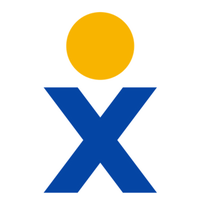OpenPhone vs. Dialpad: A Battle of VoIP Titans for 2024
August 8, 2024, 10:40 pm

Location: United States, California, Campbell
Employees: 1001-5000
Founded date: 1987
Total raised: $121.9M

Location: United States, California, San Francisco
Employees: 501-1000
Founded date: 2011
Total raised: $347M

Location: United States, Arizona, Scottsdale
Employees: 1001-5000
Founded date: 2008
Total raised: $200M

Location: United States, California, Belmont
Employees: 5001-10000
Founded date: 1999
Total raised: $400M
In the fast-paced world of business communication, choosing the right VoIP solution can feel like navigating a maze. Two contenders stand out: OpenPhone and Dialpad. Each offers unique features, pricing structures, and capabilities. Let’s dissect these platforms to help you find the right fit for your business.
**OpenPhone: The Simple Solution**
OpenPhone enters the ring with a straightforward approach. Starting at $15 per user per month, it appeals to small teams seeking essential communication tools without the frills. Its key features include unlimited calling and texting, shared phone numbers, and built-in contact management. It’s like a Swiss Army knife for small businesses—compact yet functional.
The platform shines in its messaging capabilities. Unlimited texting within the U.S. and Canada is a significant draw. Teams can share a phone number, allowing seamless transitions between team members. If a customer texts while a support rep is unavailable, another team member can jump in without missing a beat. This collaborative environment enhances customer service, making it feel like a well-oiled machine.
However, OpenPhone isn’t without its limitations. While it covers the basics, it lacks advanced features found in more robust systems. For instance, analytics are only available on higher-tier plans, and integrations are limited. If your business scales, you might find OpenPhone’s capabilities wanting. It’s like a reliable sedan—great for short trips but not built for long hauls.
**Dialpad: The AI Powerhouse**
On the other side, we have Dialpad, a platform that leans heavily into artificial intelligence. Starting at the same price point of $15 per user per month, Dialpad offers a broader range of features, particularly for contact centers and sales teams. It’s like a high-performance sports car—sleek, fast, and packed with technology.
Dialpad’s standout features include unlimited calls and meetings, multi-level auto attendants, and built-in call analytics. The platform’s AI capabilities are particularly impressive. Real-time voice transcription, sentiment analysis, and automated call summaries help teams operate efficiently. It’s a tool designed for those who want to leverage technology to enhance productivity.
However, as you scale up, Dialpad can become pricey. While the entry-level plan is attractive, costs can skyrocket with add-ons and advanced features. For small businesses seeking basic functionality, Dialpad might feel like overkill. It’s like buying a race car for a Sunday drive—impressive but unnecessary.
**Pricing Structures: A Closer Look**
Both platforms offer competitive pricing, but their structures differ. OpenPhone’s plans are simple and transparent. The Starter plan begins at $15 per user per month, while the Business plan, which includes additional features like call recording and AI-generated summaries, starts at $23. OpenPhone also offers a free seven-day trial, allowing businesses to test the waters before diving in.
Dialpad, while starting at the same price, branches into multiple product offerings. Its Business Communications plan starts at $15, but the AI Contact Center and AI Sales Center plans can reach up to $150 per user per month. This tiered pricing can be a double-edged sword—great for larger teams needing advanced features but potentially overwhelming for smaller businesses.
**Feature Comparison: The Devil is in the Details**
When it comes to features, OpenPhone and Dialpad cater to different needs. OpenPhone excels in messaging and collaboration. Its shared phone numbers and AI-suggested message responses streamline communication. The built-in contact management system, though basic, helps teams stay organized.
In contrast, Dialpad offers a comprehensive suite of tools. Its multi-level auto attendant functions like a virtual receptionist, ensuring calls are routed efficiently. The analytics dashboard provides insights into call performance, helping teams identify areas for improvement. Dialpad’s AI capabilities elevate it beyond a basic VoIP service, making it a powerful ally for sales and support teams.
**Customer Support and Integrations**
Customer support is crucial in any business tool. OpenPhone provides solid support, but its analytics and integrations are limited. Dialpad, however, offers extensive integrations with over 70 third-party applications, making it a versatile choice for businesses looking to streamline their operations.
**Conclusion: Which One is Right for You?**
Choosing between OpenPhone and Dialpad boils down to your business needs. If you’re a small team seeking simplicity and affordability, OpenPhone is a reliable choice. It’s easy to set up and use, making it perfect for those who want to keep things straightforward.
On the other hand, if your business thrives on advanced features and AI capabilities, Dialpad is the way to go. It’s designed for teams that need to maximize productivity and efficiency, especially in sales and customer support.
In the end, both platforms have their strengths and weaknesses. OpenPhone is like a trusty companion for small businesses, while Dialpad is a high-tech powerhouse for those ready to embrace the future of communication. Choose wisely, and your business will reap the rewards.
**OpenPhone: The Simple Solution**
OpenPhone enters the ring with a straightforward approach. Starting at $15 per user per month, it appeals to small teams seeking essential communication tools without the frills. Its key features include unlimited calling and texting, shared phone numbers, and built-in contact management. It’s like a Swiss Army knife for small businesses—compact yet functional.
The platform shines in its messaging capabilities. Unlimited texting within the U.S. and Canada is a significant draw. Teams can share a phone number, allowing seamless transitions between team members. If a customer texts while a support rep is unavailable, another team member can jump in without missing a beat. This collaborative environment enhances customer service, making it feel like a well-oiled machine.
However, OpenPhone isn’t without its limitations. While it covers the basics, it lacks advanced features found in more robust systems. For instance, analytics are only available on higher-tier plans, and integrations are limited. If your business scales, you might find OpenPhone’s capabilities wanting. It’s like a reliable sedan—great for short trips but not built for long hauls.
**Dialpad: The AI Powerhouse**
On the other side, we have Dialpad, a platform that leans heavily into artificial intelligence. Starting at the same price point of $15 per user per month, Dialpad offers a broader range of features, particularly for contact centers and sales teams. It’s like a high-performance sports car—sleek, fast, and packed with technology.
Dialpad’s standout features include unlimited calls and meetings, multi-level auto attendants, and built-in call analytics. The platform’s AI capabilities are particularly impressive. Real-time voice transcription, sentiment analysis, and automated call summaries help teams operate efficiently. It’s a tool designed for those who want to leverage technology to enhance productivity.
However, as you scale up, Dialpad can become pricey. While the entry-level plan is attractive, costs can skyrocket with add-ons and advanced features. For small businesses seeking basic functionality, Dialpad might feel like overkill. It’s like buying a race car for a Sunday drive—impressive but unnecessary.
**Pricing Structures: A Closer Look**
Both platforms offer competitive pricing, but their structures differ. OpenPhone’s plans are simple and transparent. The Starter plan begins at $15 per user per month, while the Business plan, which includes additional features like call recording and AI-generated summaries, starts at $23. OpenPhone also offers a free seven-day trial, allowing businesses to test the waters before diving in.
Dialpad, while starting at the same price, branches into multiple product offerings. Its Business Communications plan starts at $15, but the AI Contact Center and AI Sales Center plans can reach up to $150 per user per month. This tiered pricing can be a double-edged sword—great for larger teams needing advanced features but potentially overwhelming for smaller businesses.
**Feature Comparison: The Devil is in the Details**
When it comes to features, OpenPhone and Dialpad cater to different needs. OpenPhone excels in messaging and collaboration. Its shared phone numbers and AI-suggested message responses streamline communication. The built-in contact management system, though basic, helps teams stay organized.
In contrast, Dialpad offers a comprehensive suite of tools. Its multi-level auto attendant functions like a virtual receptionist, ensuring calls are routed efficiently. The analytics dashboard provides insights into call performance, helping teams identify areas for improvement. Dialpad’s AI capabilities elevate it beyond a basic VoIP service, making it a powerful ally for sales and support teams.
**Customer Support and Integrations**
Customer support is crucial in any business tool. OpenPhone provides solid support, but its analytics and integrations are limited. Dialpad, however, offers extensive integrations with over 70 third-party applications, making it a versatile choice for businesses looking to streamline their operations.
**Conclusion: Which One is Right for You?**
Choosing between OpenPhone and Dialpad boils down to your business needs. If you’re a small team seeking simplicity and affordability, OpenPhone is a reliable choice. It’s easy to set up and use, making it perfect for those who want to keep things straightforward.
On the other hand, if your business thrives on advanced features and AI capabilities, Dialpad is the way to go. It’s designed for teams that need to maximize productivity and efficiency, especially in sales and customer support.
In the end, both platforms have their strengths and weaknesses. OpenPhone is like a trusty companion for small businesses, while Dialpad is a high-tech powerhouse for those ready to embrace the future of communication. Choose wisely, and your business will reap the rewards.